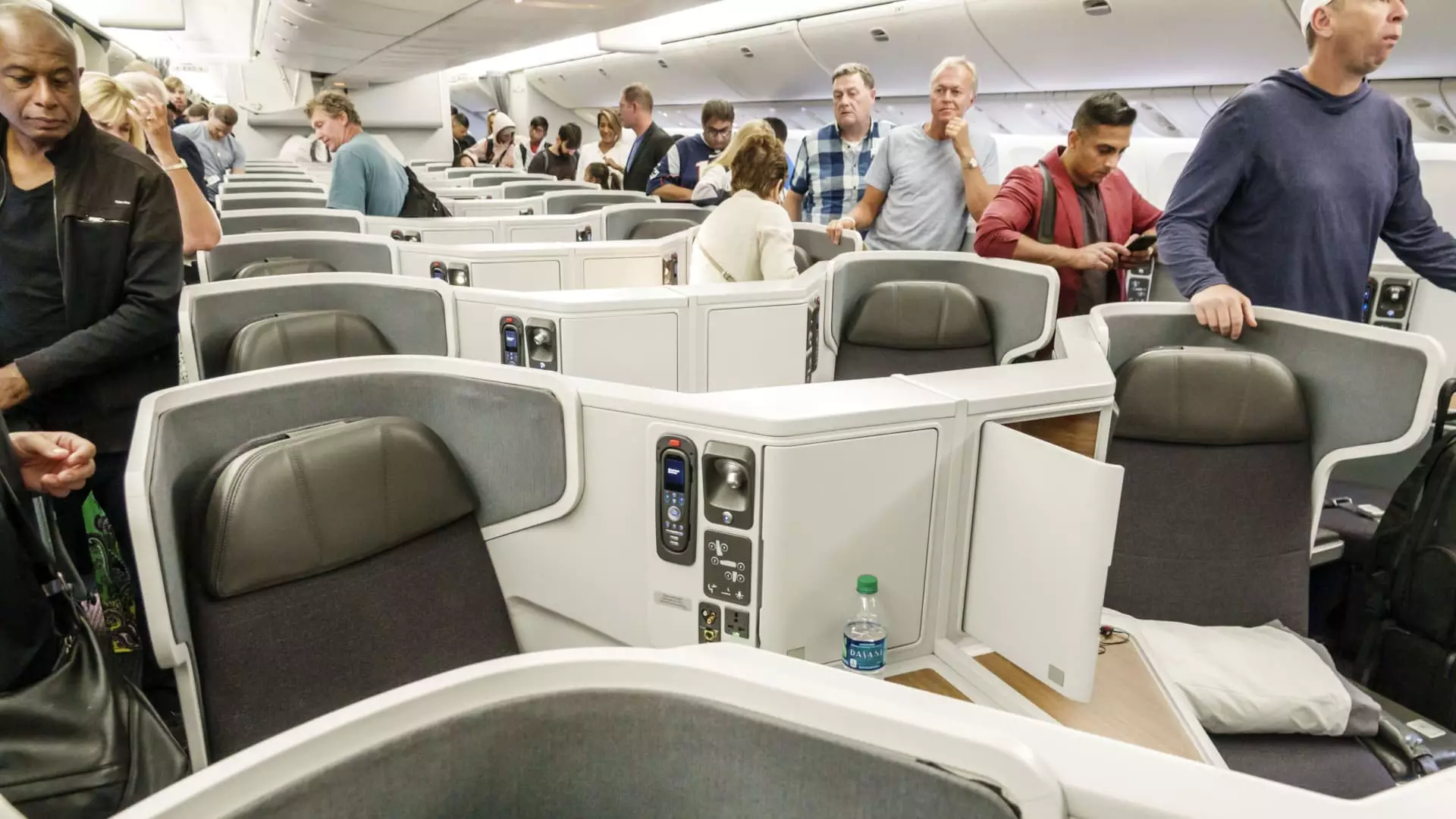The aviation industry has undergone significant transformations in response to changing customer preferences since the global pandemic. Once marked by a struggle for cheap fares, the mood has shifted towards a willingness among travelers to invest more for increased comfort in the skies. As airlines adapt to this evolving landscape, the dynamics of seating, pricing, and frequent flyer programs have all begun to reflect this new reality.
In recent years, airlines have witnessed a notable surge in demand for premium seating options. The pandemic altered travel behaviors, prompting many frequent flyers to seek more spacious and comfortable seating arrangements. This shift means that the previously sought-after “free upgrades” are harder to come by, even for those holding elite status. As more travelers invest in premium tickets, the competition for available seats in the front of the cabin has intensified, creating a landscape filled with both opportunity and rivalry.
As airlines prepare for increased passenger volumes, especially during peak travel seasons, they are fully aware of the implications. The year-end holiday period is projected to set new records as consumer enthusiasm for travel continues unabated, even into the typically quieter months of early 2025. Airlines have recognized this trend, with forecasts indicating that flight capacity will see an uptick of approximately 1% compared to the previous year. The demand for well-priced, comfortable travel experiences is pushing airlines to reconsider their seating strategies and pricing structures.
The disparity in pricing between different seating classes is striking and merits further investigation. Recent data shows wide-ranging price differences between standard economy and business class tickets, contingent on various factors such as travel routes and timeframes. To illustrate this, consider United Airlines’ round-trip offering from Newark to Los Angeles—a modest $347 for standard economy versus a staggering $1,791 for Polaris business class, which boasts lie-flat seating arrangements.
This pattern continues across the industry; for instance, American Airlines’ ticketing from New York to Paris reveals a premium jump from $1,104 in coach to $3,038 in their flagship business class during the busy Easter week. This indicates not merely a reflection of operational costs but a strategic push by airlines to capitalize on premium existing demands as a means for financial sustainability.
Airlines’ loyalty programs are at the heart of this new era of premium seating economics. Historically, frequent flyer systems catered primarily to those loyal members who spent significant time in the air rather than money. However, the landscape has reversed, and airlines are shifting the criteria for earning elite status by focusing on spending rather than distance traveled. This has led to an increase in elite status memberships, heightening the competition for early boarding and prime seating.
Delta Air Lines and others have recognized this phenomenon, with a considerable uptick in travelers now opting to pay for premium seats. Delta President Glen Hauenstein reported that the percentage of paid first-class tickets has skyrocketed to 75%, a significant increase from 12% just 15 years ago. This pivot reflects a broader trend, as airlines now view their premium offerings as vital revenue streams rather than loss leaders.
In light of these changes, airlines are innovating their cabin layouts and offerings to attract more customers keen on premium experiences. JetBlue Airways has plans to introduce “junior Mint,” a new class with fewer lounges but enhanced comfort, while Alaska Airlines is retrofitting its fleet for more premium seating as it expands internationally. This strategy is echoed across the board, with carriers like United and Delta bolstering their premium seating to accommodate a growing appetite for luxury among passengers.
Such strategic innovations are designed not only to cater to more affluent travelers but also to connect with a continuously evolving customer base. The traditional model of air travel is shifting, and passengers are more inclined than ever to prioritize comfort over cost—something that continues to reshape the industry.
Ultimately, the future of airline seating is poised to embrace a new paradigm, shaped by the realities of the post-pandemic world. As younger generations of flyers express a desire for improved travel experiences, airlines are grappling with the dilemma of accommodating increased luxury without compromising their core values or operational capacities.
For carriers like Southwest Airlines, the challenge lies in retaining its traditional low-cost structure while meeting the evolving expectations of customers seeking more relaxation and legroom. Balancing these demands will require not only strategic retrofitting of cabins but also creative marketing approaches to ensure that value is perceived in premium offerings.
The airline industry is navigating a significant shift in passenger preferences, necessitating dynamic adjustments in seating offerings, pricing structures, and loyalty programs. As travelers increasingly embrace the significance of comfort and premium travel experiences, airlines must adapt and innovate to secure long-term sustainability in an intensely competitive market.

